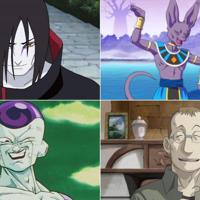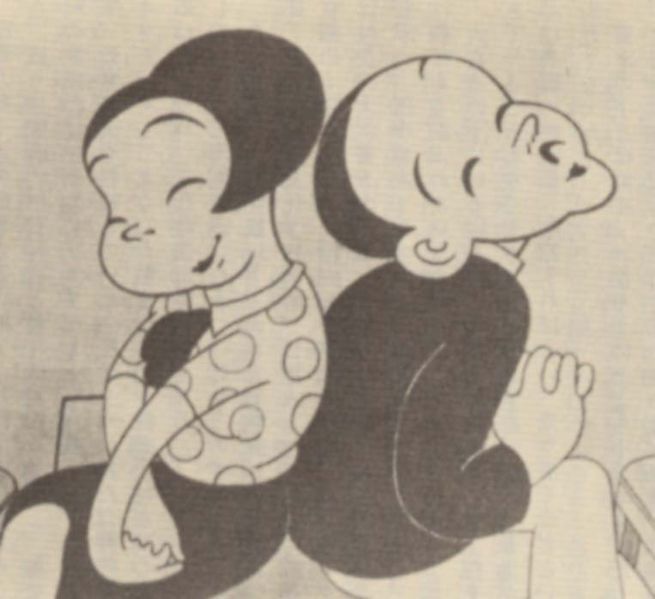The 21st Century has offered us great advances in technology that have been accumulated throughout thousands of years. The same goes with art tracing its roots from several surviving artifacts such as cave drawings and potteries. And now, we are currently enjoying both of these in form if films, photography, etc., and for everyone who is reading this article, of course animé. With boasting popularity worldwide, animé is indeed a one of a kind form if entertainment that throughout several decades have covered almost any genre that you would think. Because of its diversity, it is not surprising that there are audiences above 18 years of age (including me the author himself) who still watch animé. Doesn’t it make you curious how it started? Even decades before Osamu Tezuka? With no further ado, join me on our way back to time and let’s take a peek.
Fun Fact
Did you know that word “animé” is a shortened word for “animēshon”, the Japanese transliteration for animation? From the root word itself, in a broad sense, animé is everything about animation. Hence, we can consider cartoons as animé. But since the former has a distinct art style and wide variety of genre, it is always differentiated to the latter pretty much like how a wolf is different to a dog.
Animé at Early 20th Century
As we all know, with the popularity of photography and advent of cinematography in Europe and after Japan opens its doors after centuries of “self-isolation”, the film was introduced to the Land of the Rising Sun in late 1890’s and flourished on the following decades of the next century. With the eventual creation of motion pictures featuring drawn figures rather than photographs, the West started to produce these, which was then followed by the Asian nation. At that time, theater traditions such as kabuki, noh, and bunraku were still popular, and the new form of motion pictures were viewed as an extension of these.
One of the earliest and speculated to be the oldest surviving Japanese animation circa early 1900’s is Katsudo Shashin (Moving Picture), which featured a boy writing a kanji for Katsudo. Same as the other animations of that time, it was meticulously and patiently drawn on series of strips of film. This method was pioneered in Japan by Oten Shimokawa, a political cartoonist for Tokyo Puck at that time. One of his works is Imokawa Muzuko Genkanban no Maki (The Story of the Concierge Muzuko Imokawa, 1917). He went on an early retirement after finishing 5 animation shorts and also due to his poor health.
After the hand-drawn motion pictures, the animation that was derived from paper cutouts entered the silver screen. This was started by Junichi Kouichi. He used cutouts laid out on a table which he moved after capturing a minute movement, pretty much like how clay animations were made. His popular work is Namakura Gatana (Dull Sword), which is about a warrior who just got his new sword and wanted to try it out on a villager only to fail.
By 1921, Kitayama Eiga Seisakado was founded by Seitarou Kitayama, the largest name in the animation industry at that time and also the only one who has his own studio compared to his contemporaries. Several of his works were about Japanese folk tales. Two years after founding his studio, the Great Kanto Earthquake hit Japan, destroying several structures. Unfortunately, his studio was badly devastated along with several motion pictures at that time. A year after the tragedy, he left Tokyo and ventured to Osaka for a new start. Later, he abandoned the animation industry and focused on a career shooting news reels.
Stay tune fellow fans and next time, we will take a peek on Japanese animation before and during the Second World War.
See also: Top 5 Animes That Will Always Be Binge Worthy
See also: According to Fans, These 5 Anime have the Most Annoying Fanbases


According to Fans, These 5 Anime have the Most Annoying FanbasesOct 23, 22 1pm

10 Anime Characters Who Deserve DefeatAug 22, 22 12pm

5 of the Best (or the Worst) Anime Characters with Split PersonalitiesOct 19, 22 1pm

English Dub for The Yakuza’s Guide to BabysittingNov 23, 22 5pm

More Than a Married Couple, But Not Lovers Anime Adaptation will Premiere in October This YearSep 20, 22 12pm

Five New Anime Coming out in JulyJun 29, 22 2pm

Anime Adaptation for Murai in Love has been AnnouncedJul 9, 22 5pm

Twitter Exploded in Celebration for the 16th Anniversary of Fairy TailSep 6, 22 1pm

Ni No Kuni, The Anime, The Game and How They’re RelatedJul 25, 22 9am

Is It Wrong to Pick up Girls in a Dungeon? Probably not, if there’s soon to be 4 seasonsAug 3, 22 2pm

Two New Animated Specials for My Hero AcademiaAug 14, 22 9am

Anime fans can get your own free website on RavenMay 6, 24 7pm

Artificial Intelligence from OpenAI expands to TokyoAug 27, 24 9pm

Top staff suspended at Anime DetourApr 12, 24 2pm

Anime Detour removes Troy McDonald and Kristen Loth from executive teamJun 10, 24 5pm

Anime-affiliated musicians of blank paper to perform at Anime MidwestMay 15, 25 1pm

Music festival "Dirtybird" reportedly failed to pay hotel venue, reports The Festive OwlSep 3, 25 4am

Anime Milwaukee may have hired previously-fired Anime Detour executivesJan 31, 25 10pm

Yor's Appeal in 'SPY×FAMILY' is Her InnocenceNov 12, 23 2pm




